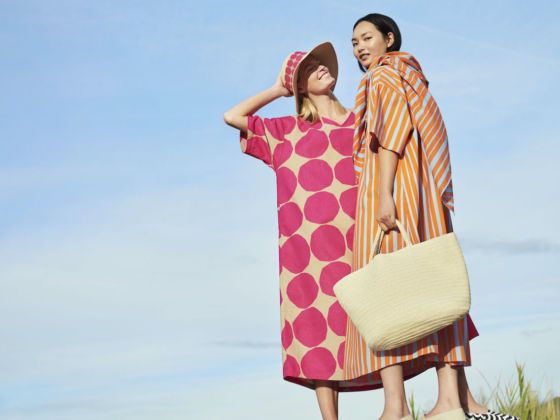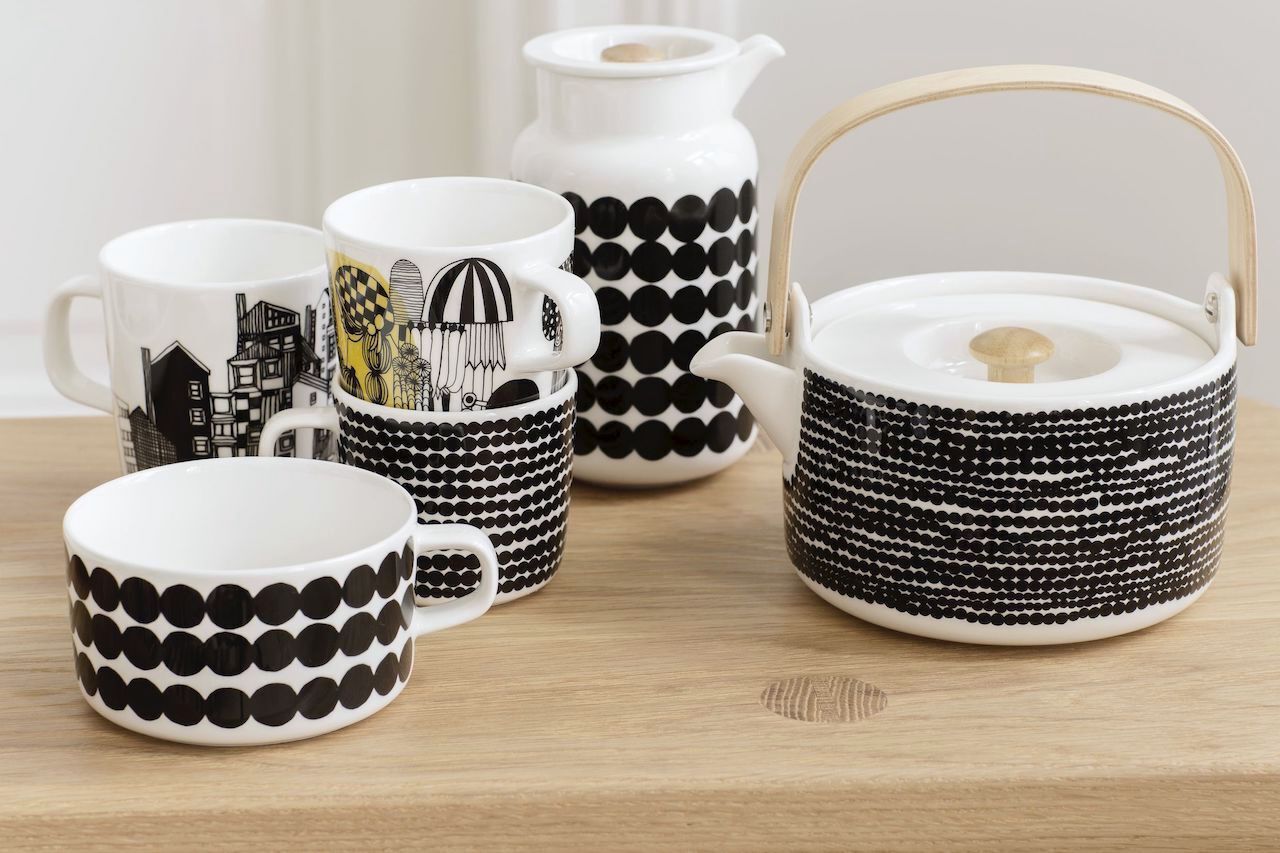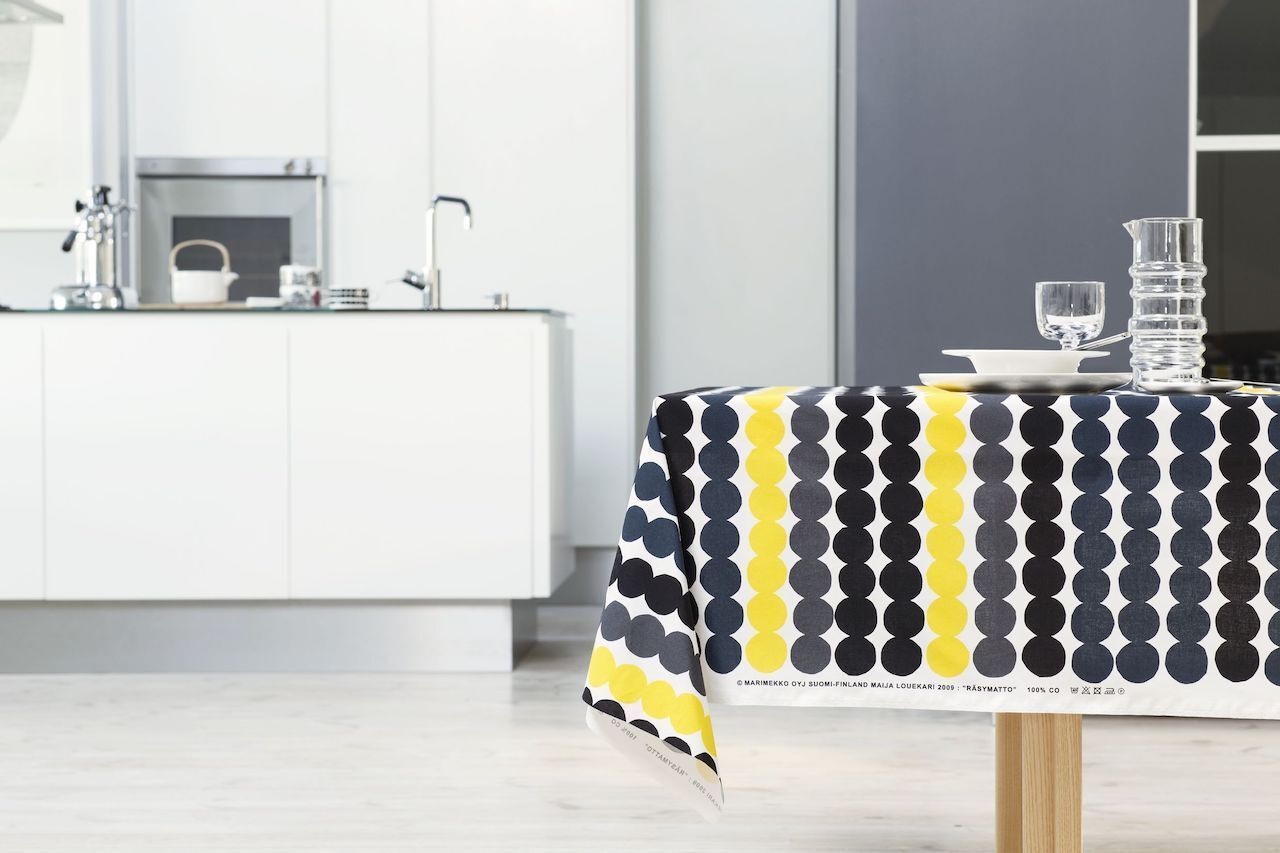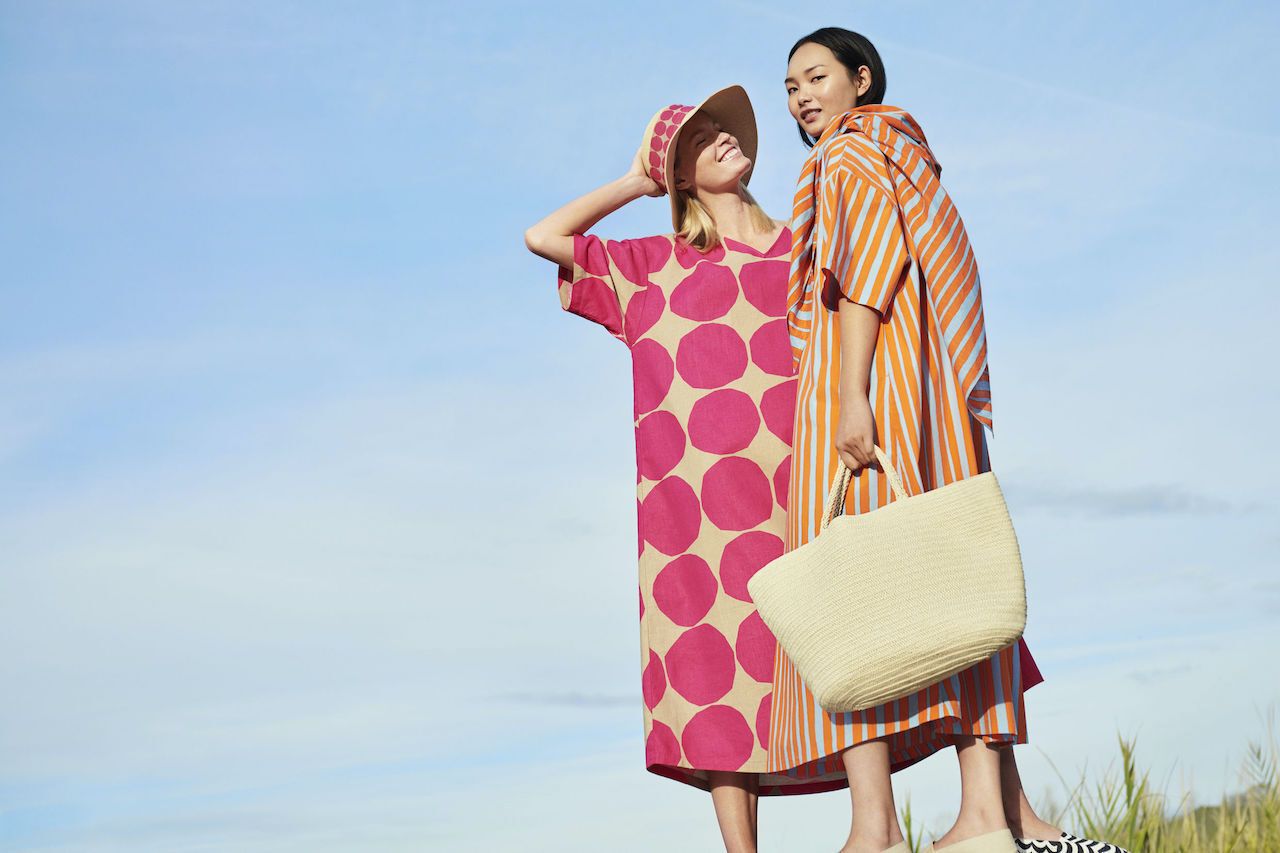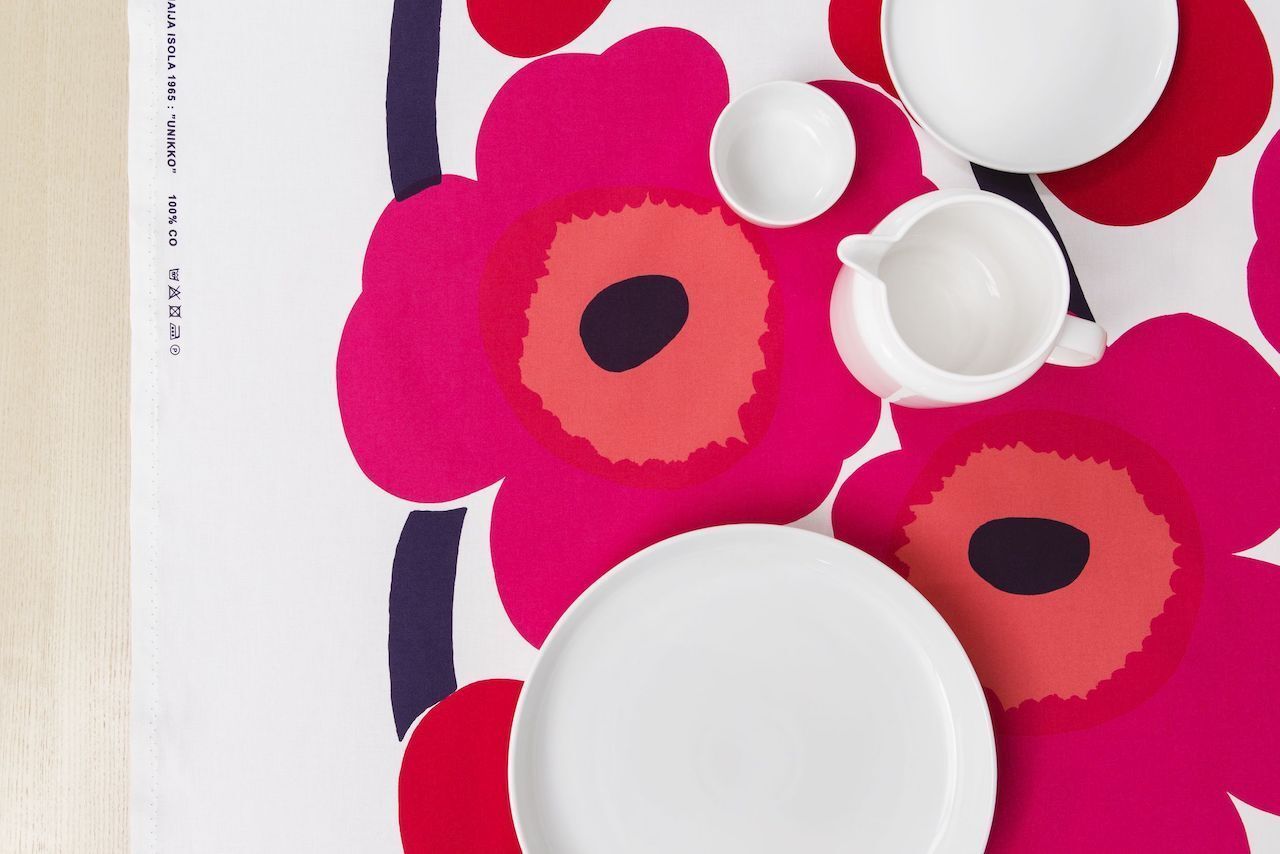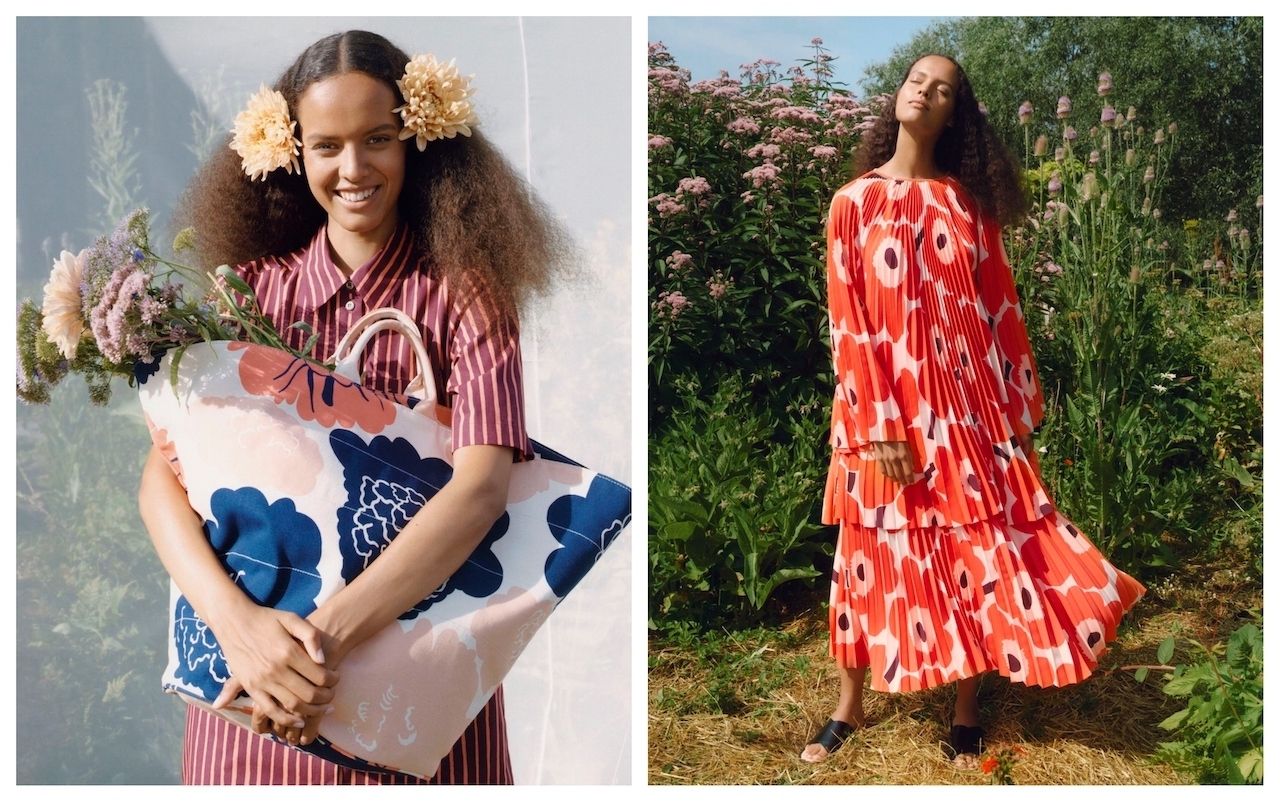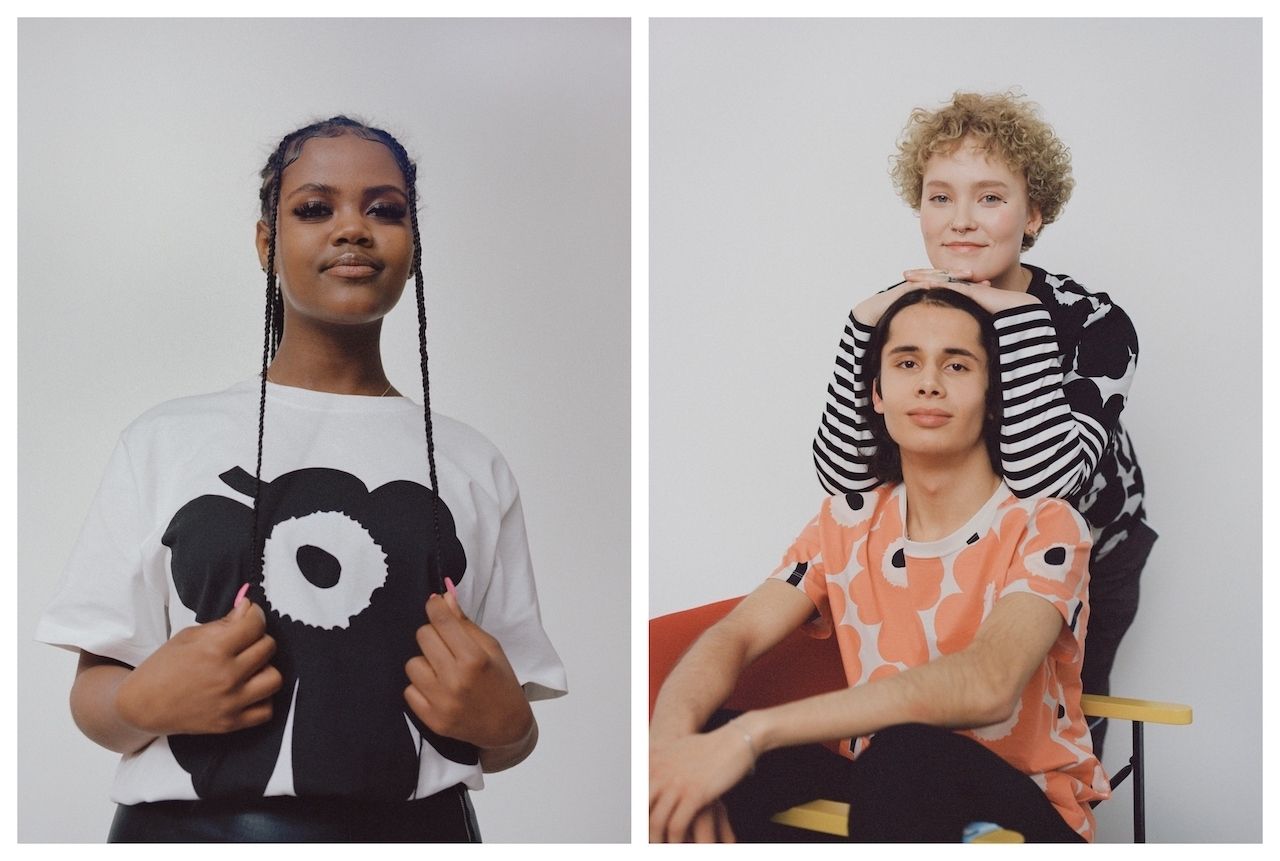Picture a rainy day in Helsinki, Finland. People walk the streets, getting off trams or stepping into shops. The tones are subdued — mostly grey, beige, black. Suddenly there’s a pop of color, and then another. An umbrella with vibrant blue flowers here, a raincoat with big, red circles there.
You walk into a warm Finnish home. The living room is uncluttered, with a soothing palette of earth tones — save the yellow throw pillows on the sofa. In the mostly white kitchen, your eyes are drawn to plateware ringed with bold, black, imperfectly round dots.
